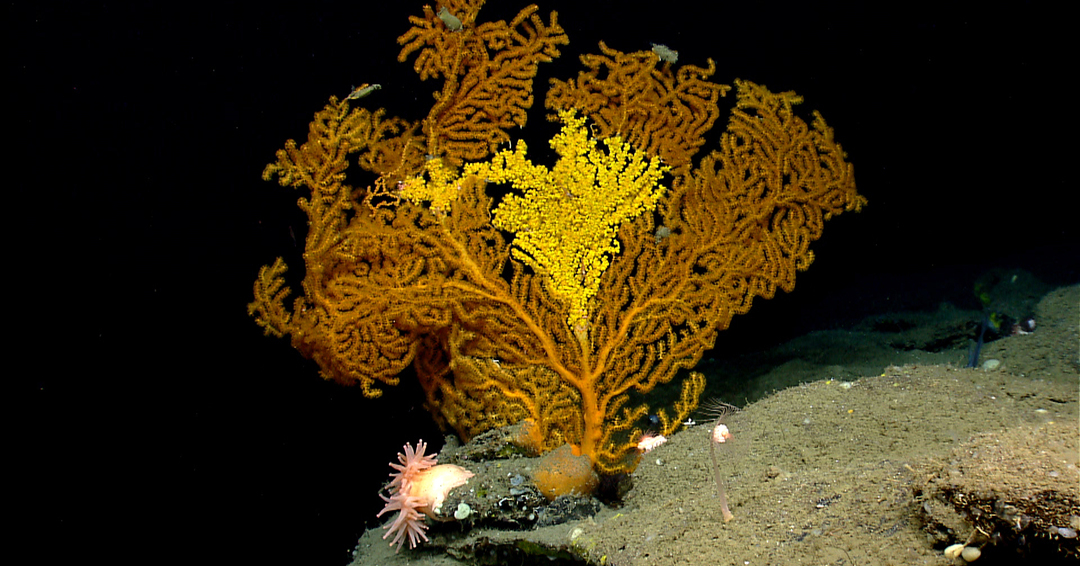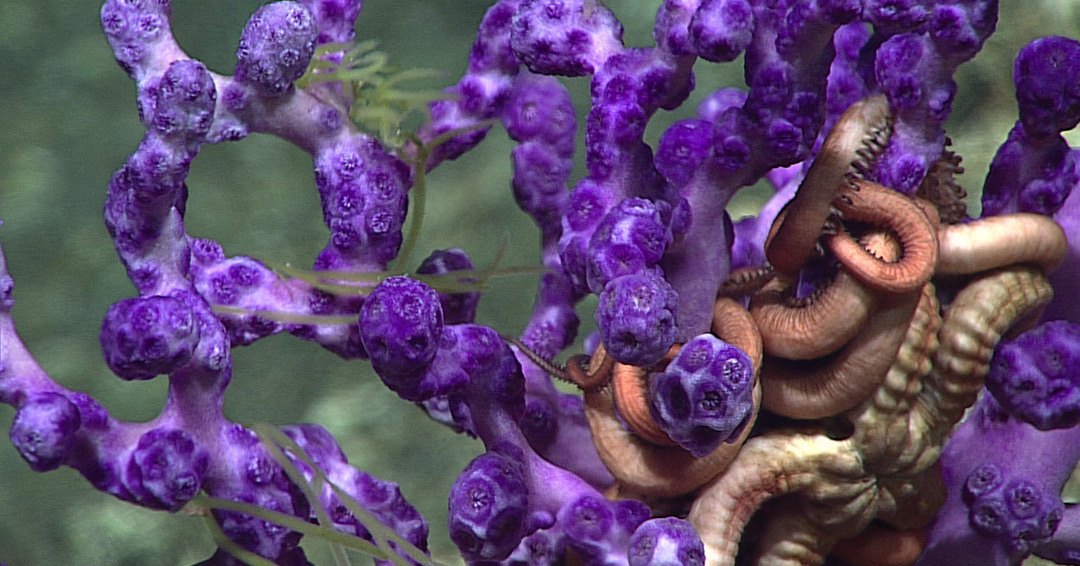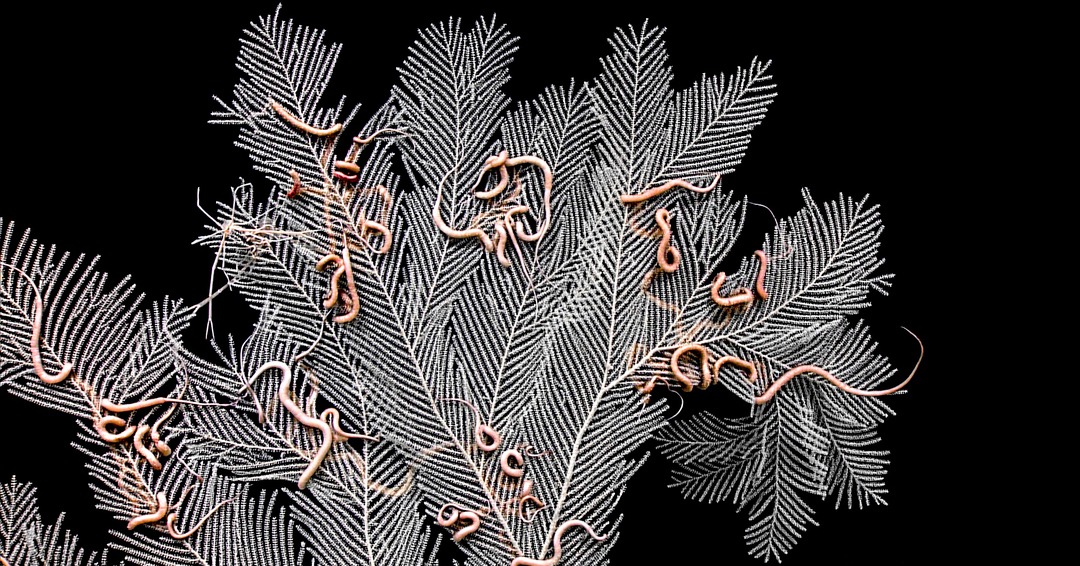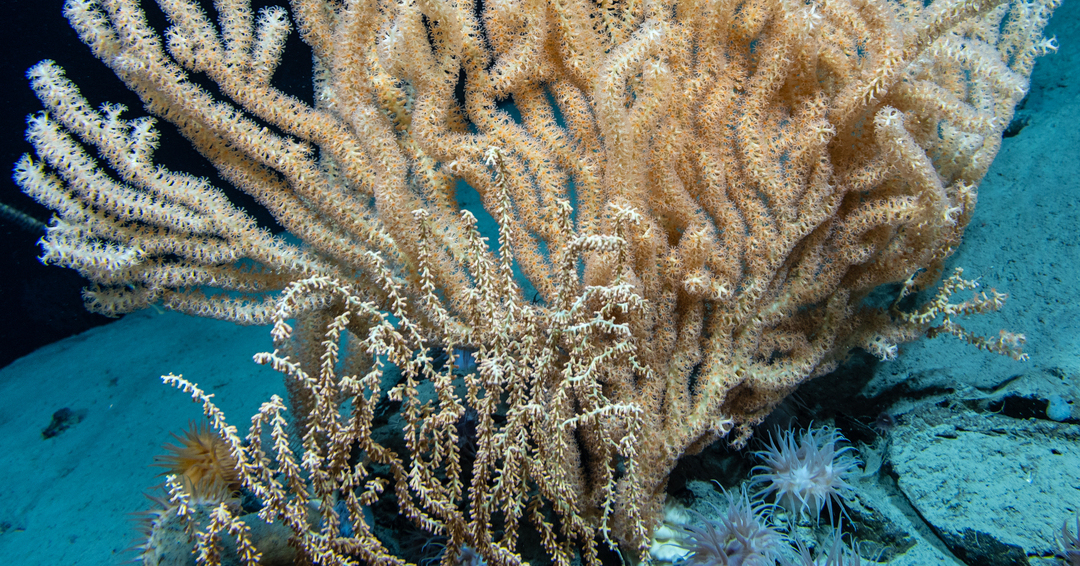Conservation and restoration of cold-water corals: a roadmap for future research
CORDAP has released a roadmap setting out the knowledge gaps and the key research priorities and technological developments needed, to ensure effective protection and restoration of the world’s cold-water corals.
The roadmap was written by a team of global deep and cold water corals experts, following a CORDAP workshop held in Norway, co-hosted by REV Ocean.

The current status of CWC knowledge
Despite early records dating back to the late eighteenth century, little is known about cold-water corals (CWC), and they have only become more widely studied in recent decades.
Deep and cold water corals form globally significant, diverse, and productive ecosystems, serving as habitat and nursery grounds for numerous other species. Yet because their habitats tend to be in very cold, remote, high-pressure habitats, it’s difficult to access them. As a result, developing any kind of research or exploration tends to require a lot of funding and equipment.
Underwater vehicles, whether remote, autonomous or human-driven, can help study and collect biological samples and imagery from hard to access regions. However, along with other high-cost equipment and tools, these vehicles are largely out of reach financially to many researchers, specifically those from the Global South, rendering deep-sea science largely a privilege of the Global North. Equity in deep-sea sciences is essential to ensure equal and balanced international collaboration, and to avoid undermining local expertise, which can hinder the potential for conservation success.
CORDAP’s roadmap identifies knowledge gaps and research priority areas, to help support the expansion of CWC conservation and restoration over the coming decade.

.
Setting priorities
The roadmap highlights 10 CWC research knowledge gaps that require urgent attention and action.
1. Global and regional distribution patterns of CWCs
CWC reefs are known to occur across a vast range of environments, but there are no complete global maps specifically for either reef distribution or for CWC habitats.
2. Geographical gaps within CWCs exploration
A tendency for exploration to happen only in certain areas has resulted in a bias in terms of available CWC distribution data which could ultimately influence predictions of suitable habitats for restoration. More must be done to support exploration generally, and specifically within the Global South which remains largely unexplored.
3. Taxonomy and community composition
Little is understood about CWCs complex taxonomy. Increasing knowledge around the taxonomy and species-specific traits of CWCs is essential for successful restoration procedures.
4. Sexuality and sperm and egg production
Less than 4% of known CWC species have been included in reproduction studies, yet this information is critical to implement effective restoration strategies.
5. Sexual maturity and reproductive capacity
Greater insights are needed into when CWC reach sexual maturity.
6. Reproductive mode and seasonality
Direct observation of actual reproductive spawning or offspring release events is also required to better understand the reproductive modes of CWCs, and to determine whether reproductive activities happen during specific seasons or at regular intervals.
7. Fertilization, larval development and settlement
The underlying mechanisms that control larval dispersal and settlement, including sensory cues and influential environmental factors require investigation.
8. Connectivity and structure of CWC populations
To ensure recruitment to restored sites and the continued resilience of restored populations, it is essential to study CWC population connectivity.
9. Growth rates and biomineralization of CWCs
Knowing species specific growth rate and skeleton production of CWCs is key to properly planning restoration methods.
10. The food dynamics of CWCs
A better understanding of their feeding mechanisms, preferred food sources and seasonal variability in their food sources is needed.

Key recommendations for cold-water coral research and conservation
Filling in the knowledge gaps identified on CWCs distribution and biological processes will only be possible through a unified strategy, bringing together different stakeholders such as researchers, philanthropists, policy-makers and government, to advance science and technology, while reducing inequality between Global North and South.
International collaboration will make it possible to restore and conserve what’s left of CWC ecosystems, and support the Kunming-Montreal Global Biodiversity Framework objective of conserving and restoring 30% of the ocean.
The Roadmap set out a list of recommendations to help advance CWC research, conservation and restoration in the next 10 years.
- Widen participation in CWC research with more representation from the Global South, to ensure its equitable future and to fill in the current geographical gaps in CWC knowledge.
- Stop bottom-trawling in areas of CWCs and protect untrawled areas. These areas represent the best potential sites for future healthy CWCs, and should be left as potential refugia and sources of larvae for those areas already impacted.
- Encourage CWC community coordination and engagement, to speed up international exchange of ideas, results, and methods.
- Share CWC data freely and more effectively in existing platforms, such as the Ocean Biodiversity Information System.
- Focus research efforts on creating a better understanding of CWC biology such as taxonomy, reproduction, growth and feeding.
- Create dedicated, longer-term funding streams to support these recommendations. Some aspects of CWC research, conservation and restoration require timescales that do not easily fit into current short-term grant rounds.
- Increase global understanding and awareness of CWCs, ensuring they are included in the agenda of policy meetings, such as biodiversity and climate COPs.

Choosing where to focus in a data-poor field is challenging, but these recommendations form a list of priorities that will hopefully increase our immediate chances of conserving and restoring cold-water corals. CORDAP will take these recommendations into account when developing our strategies for R&D investment and will be encouraging others to do the same.
Read the full Roadmap: CORDAP R&D Technology Roadmap – Conservation and Restoration of Cold-Water Corals
Learn more about our other scoping workshops: Studies & roadmaps – CORDAP
Explore some of the R&D projects we are currently funding to help restore and conserve corals around the world: Projects Awarded – CORDAP
Photos credit: NOAA

